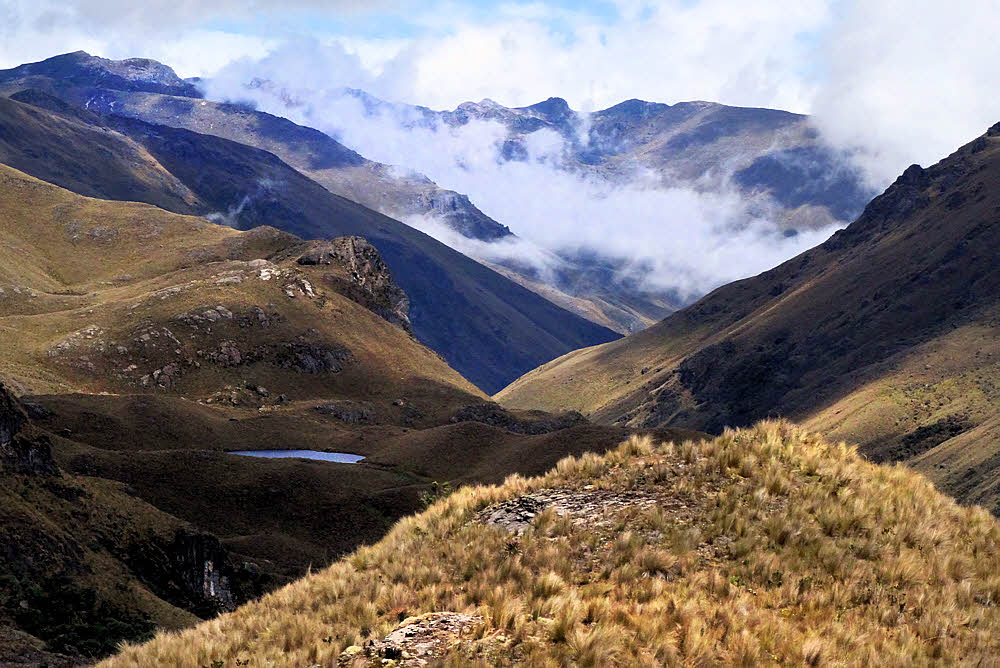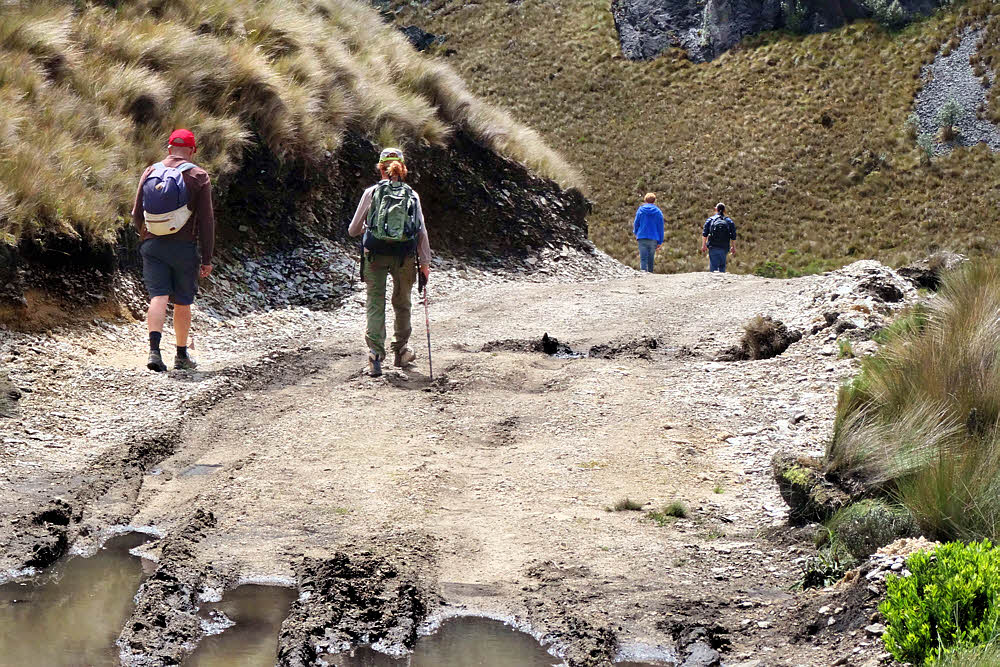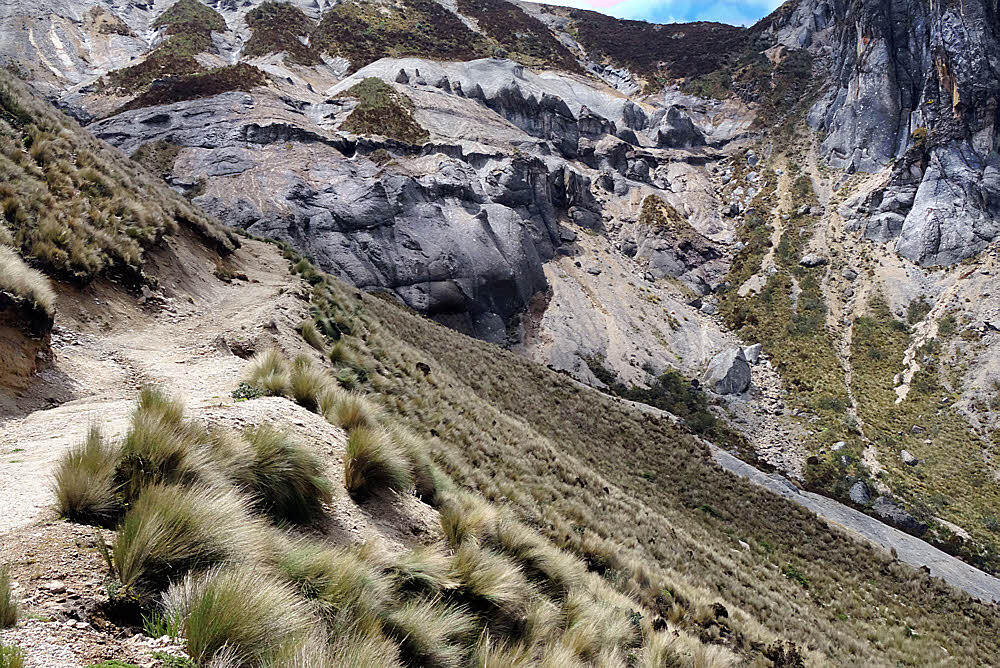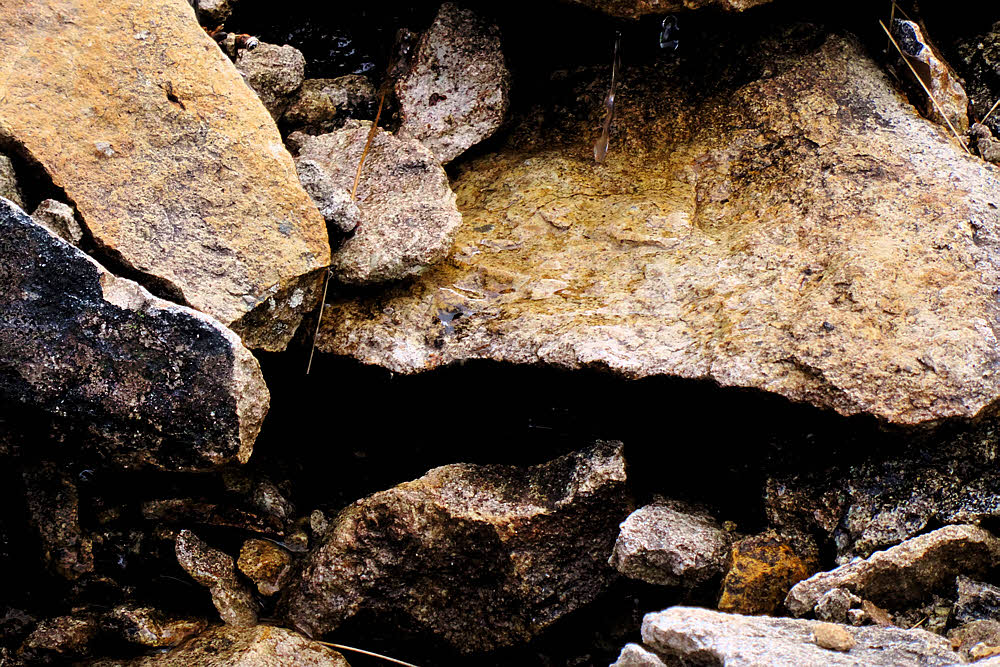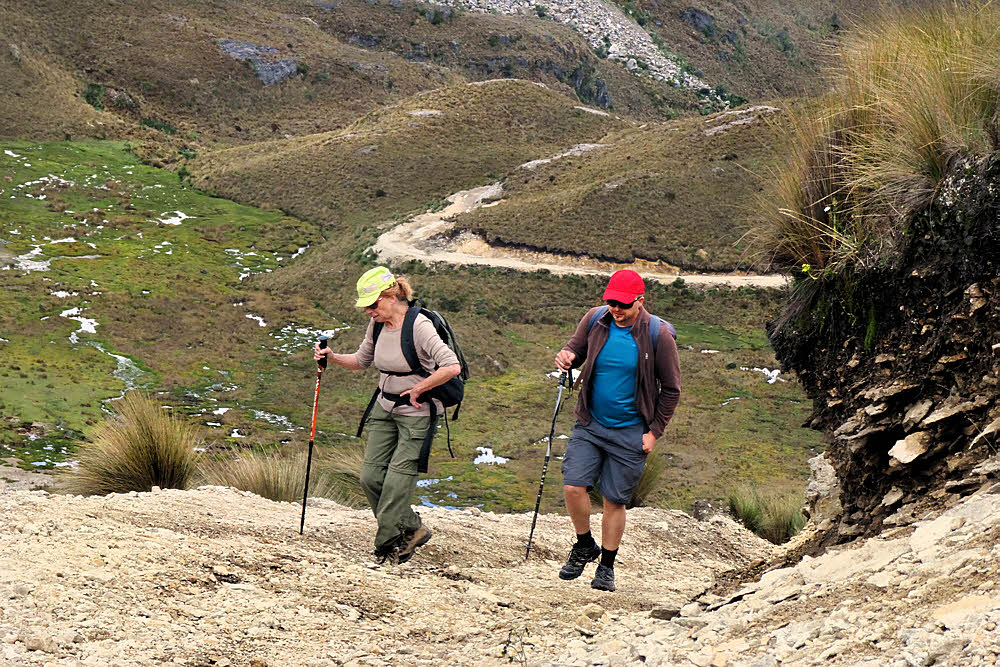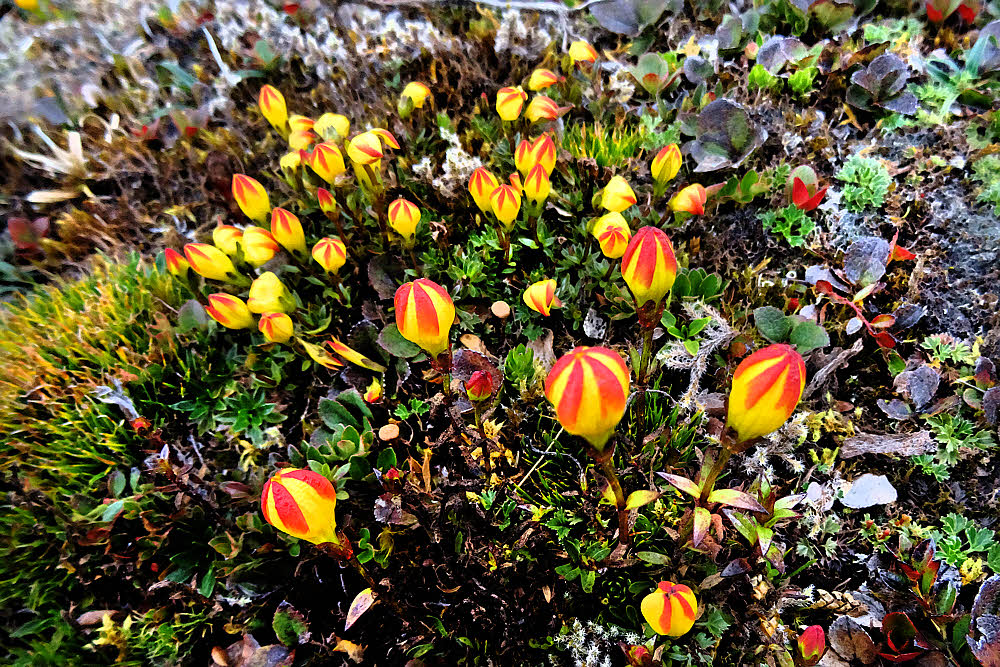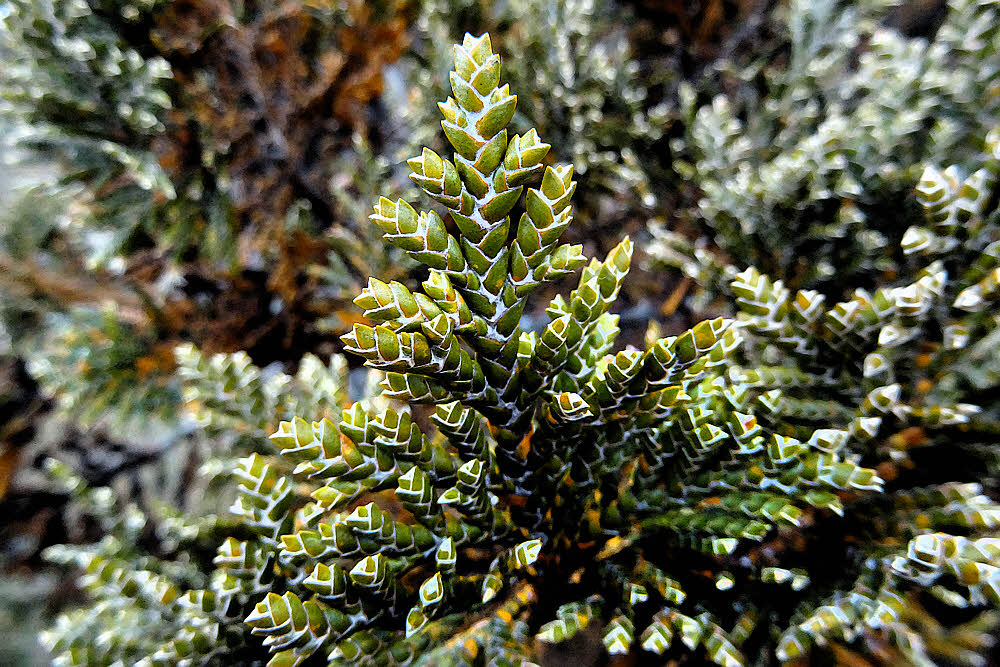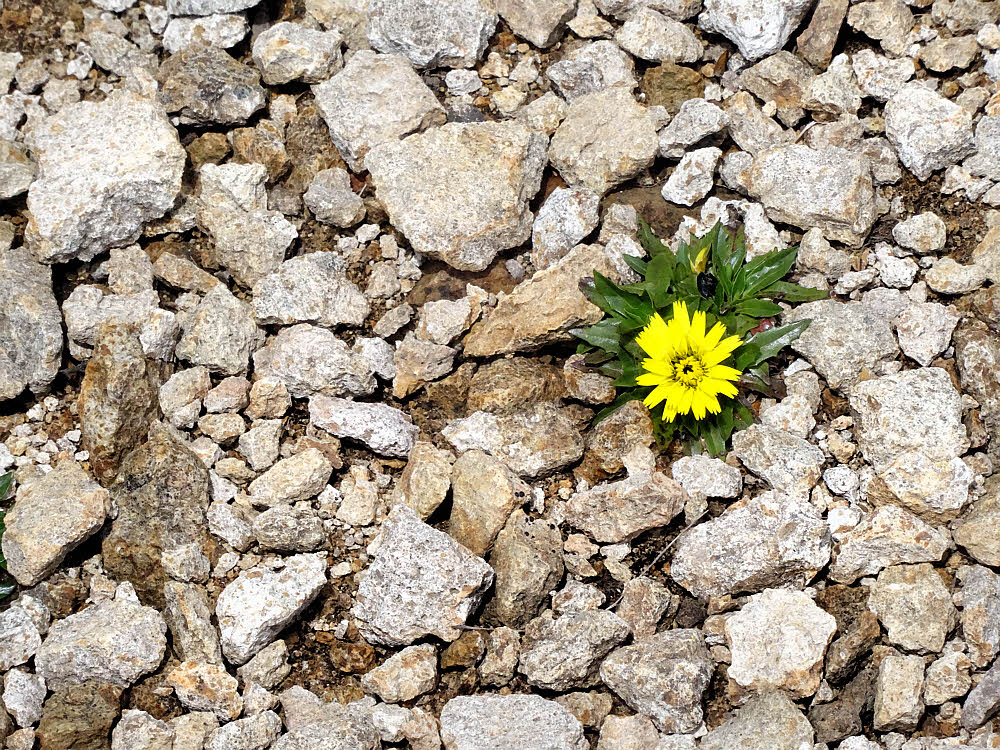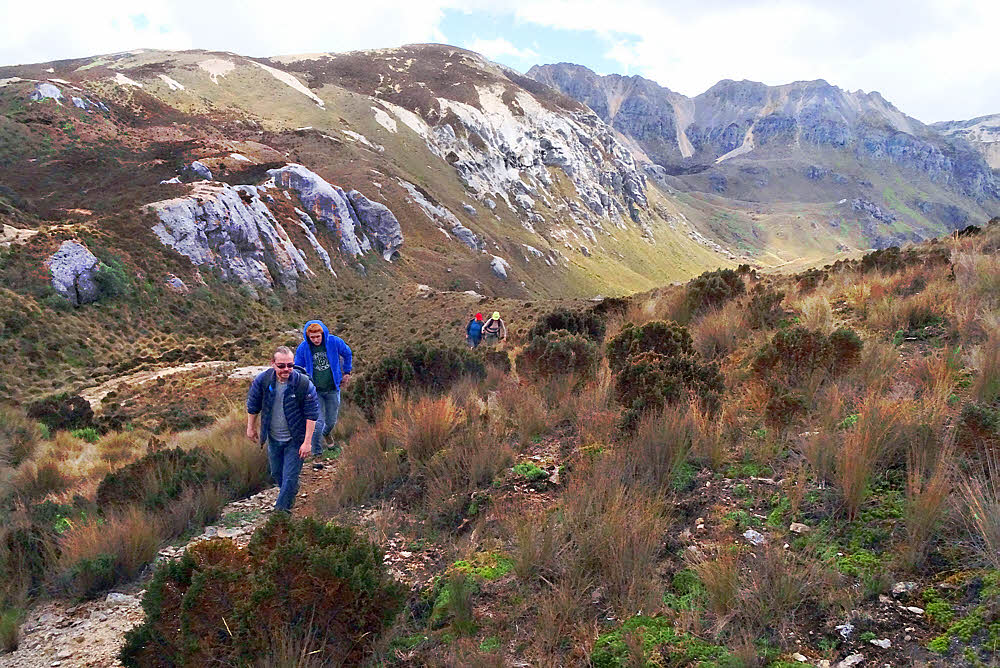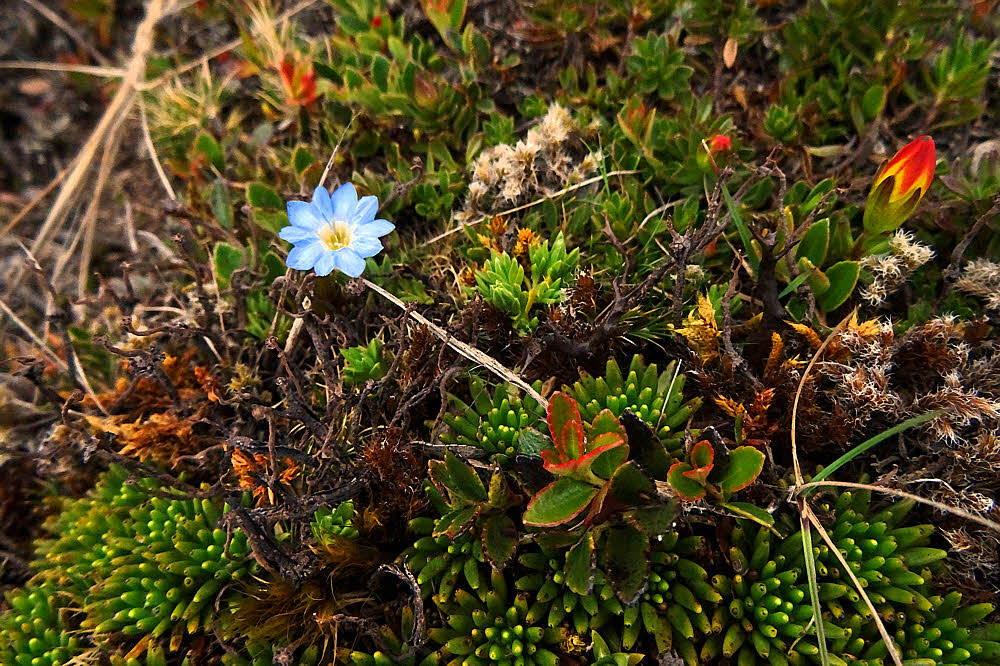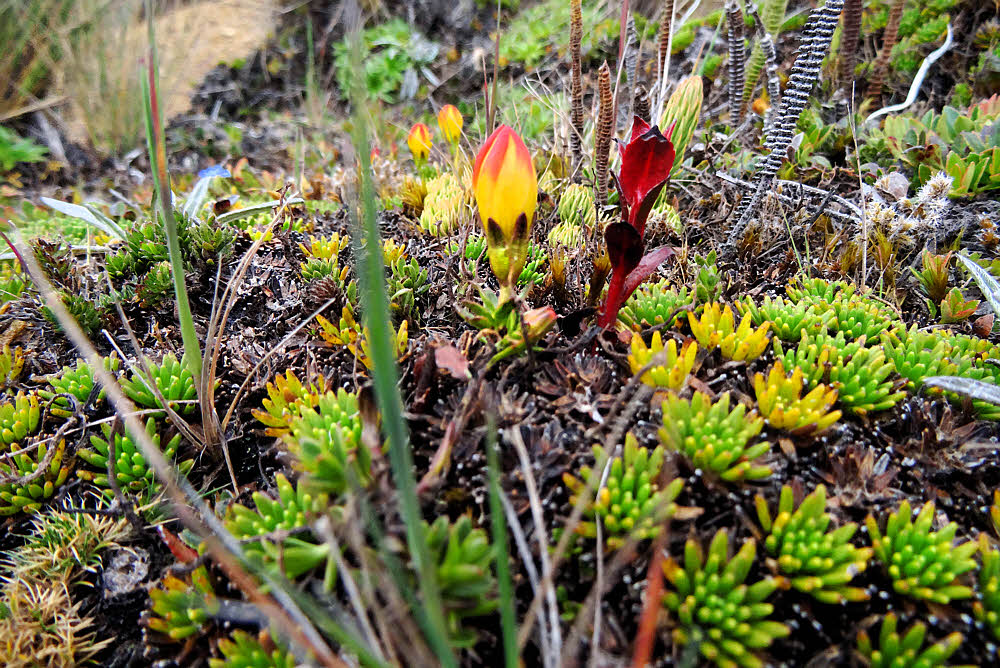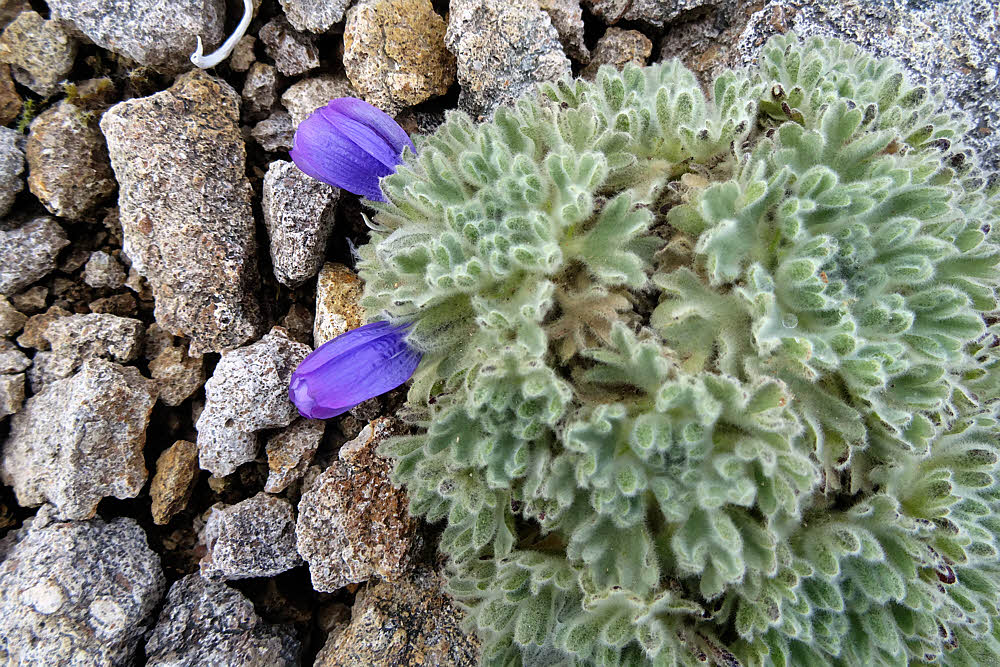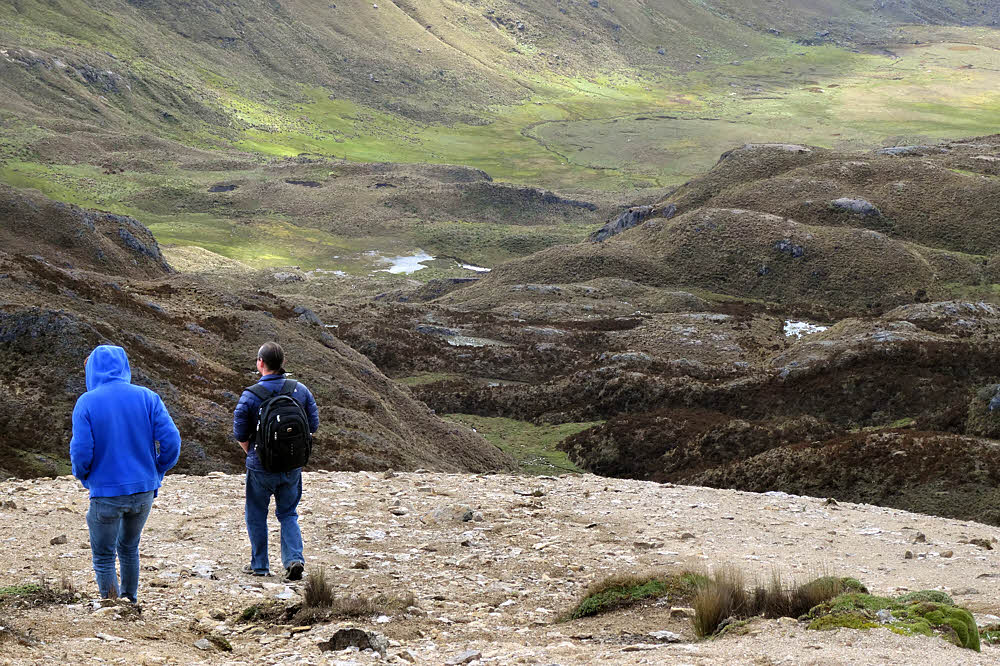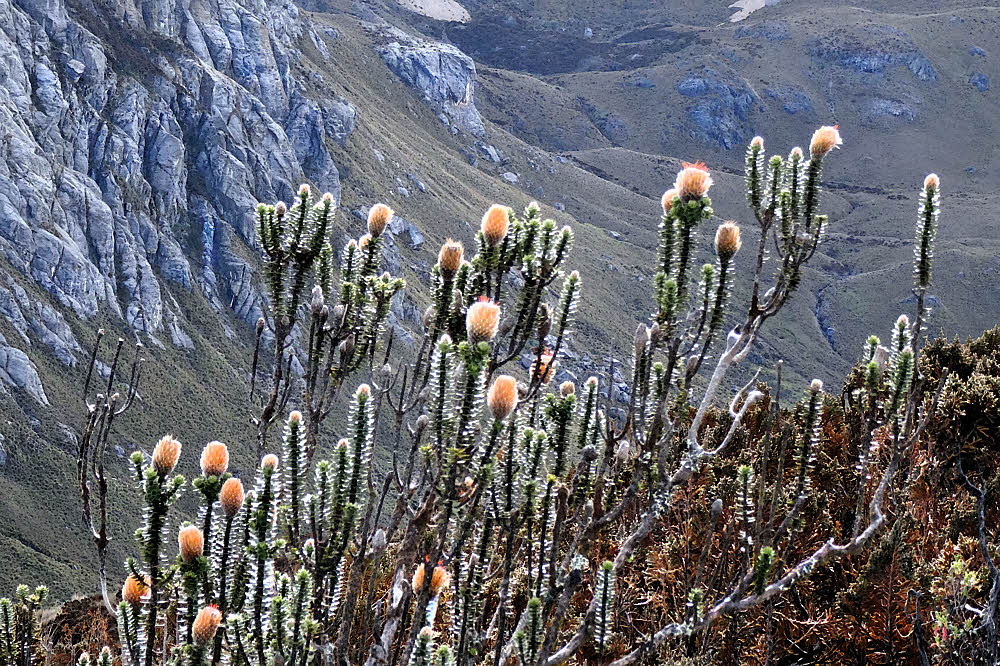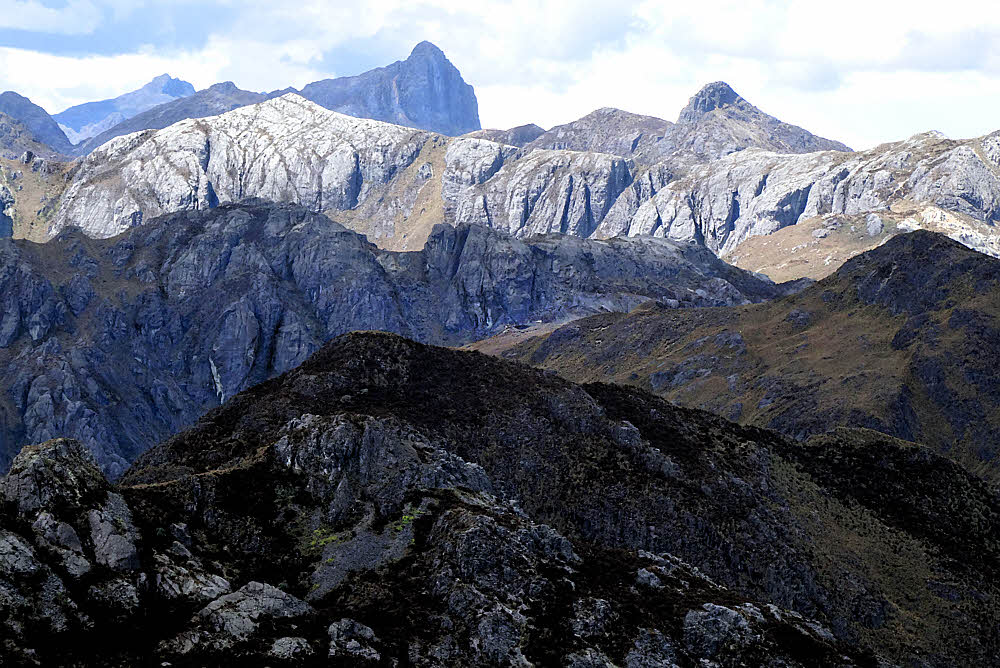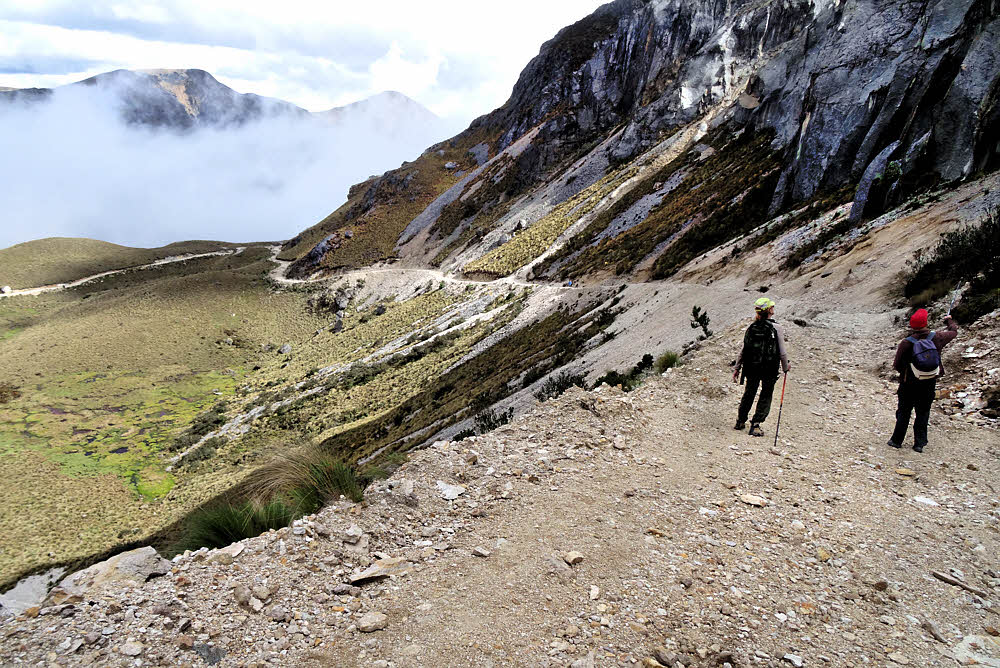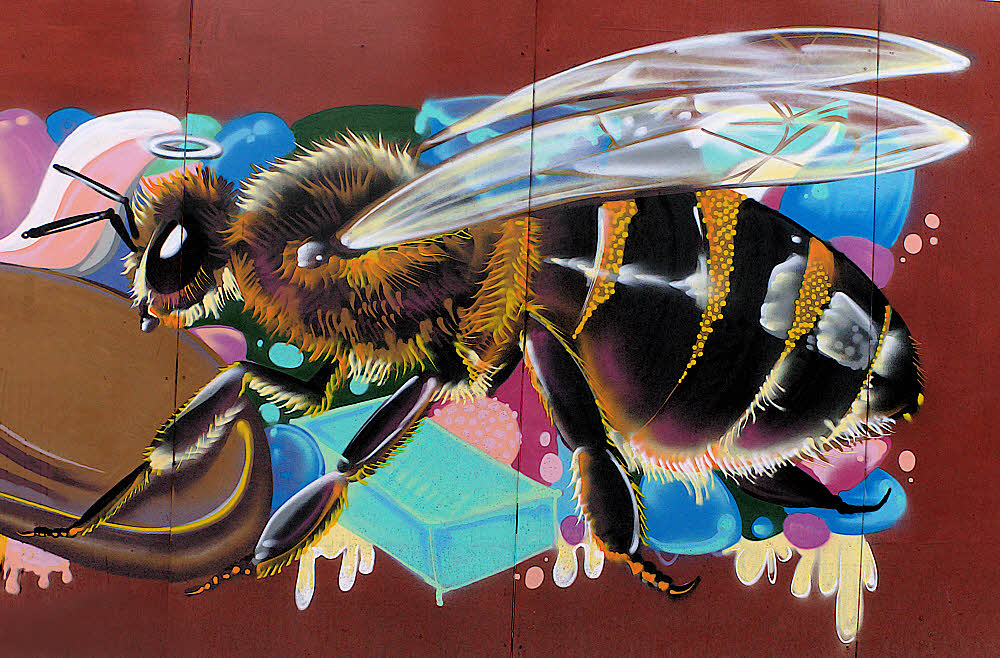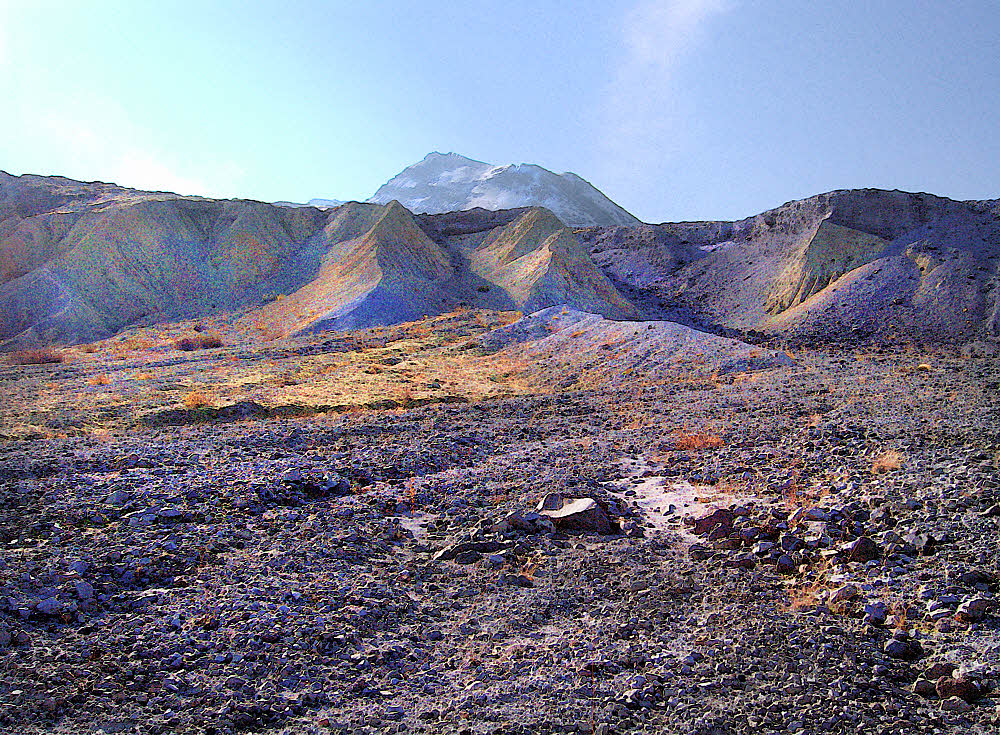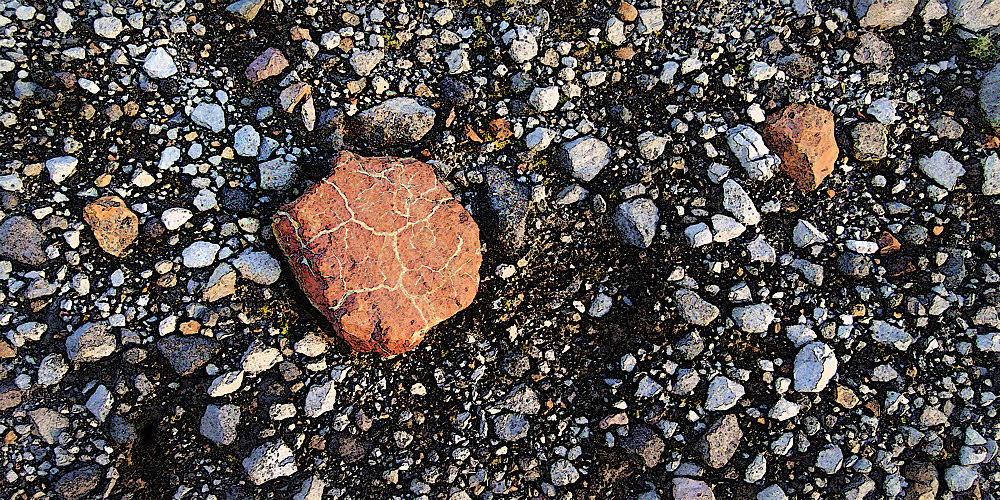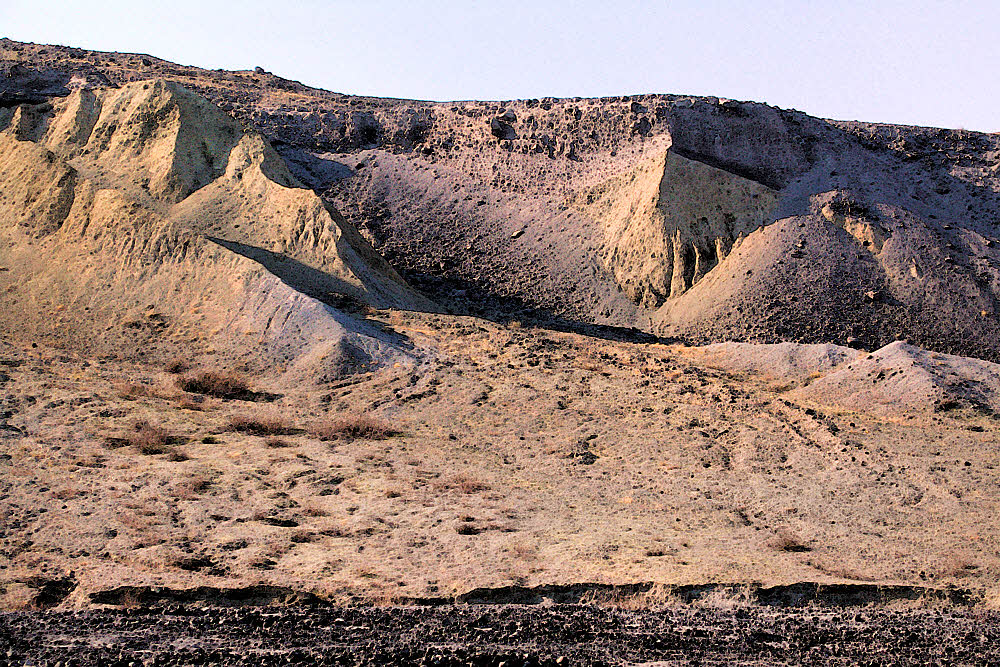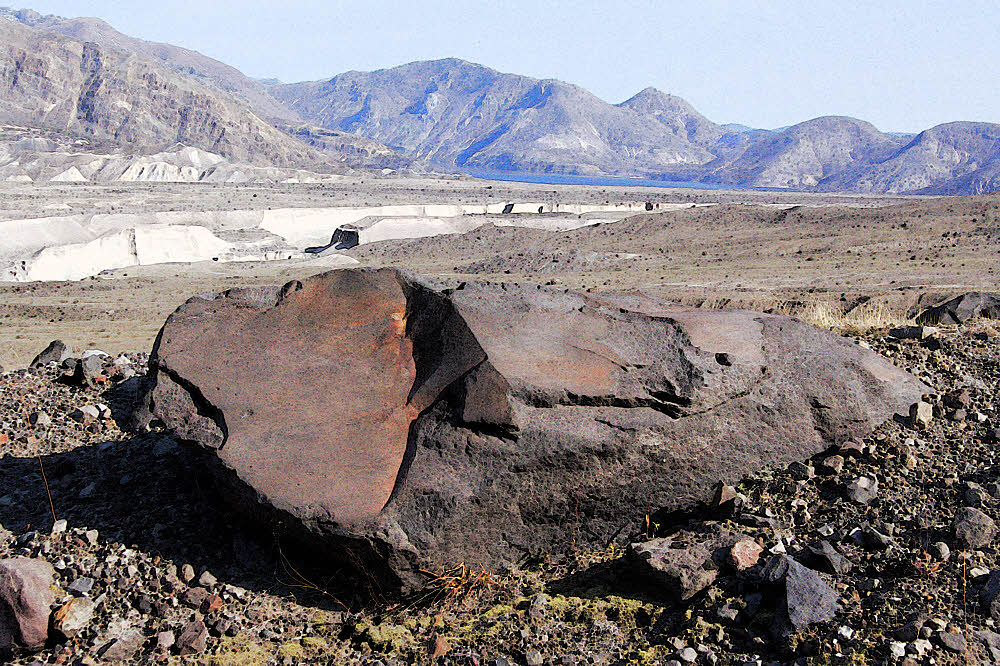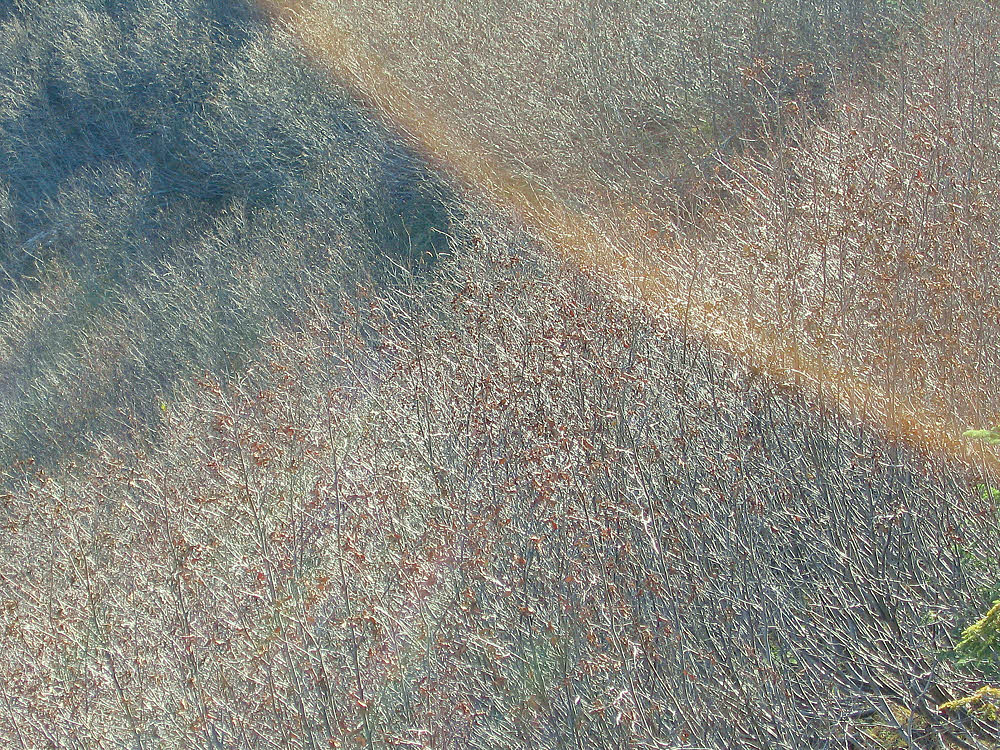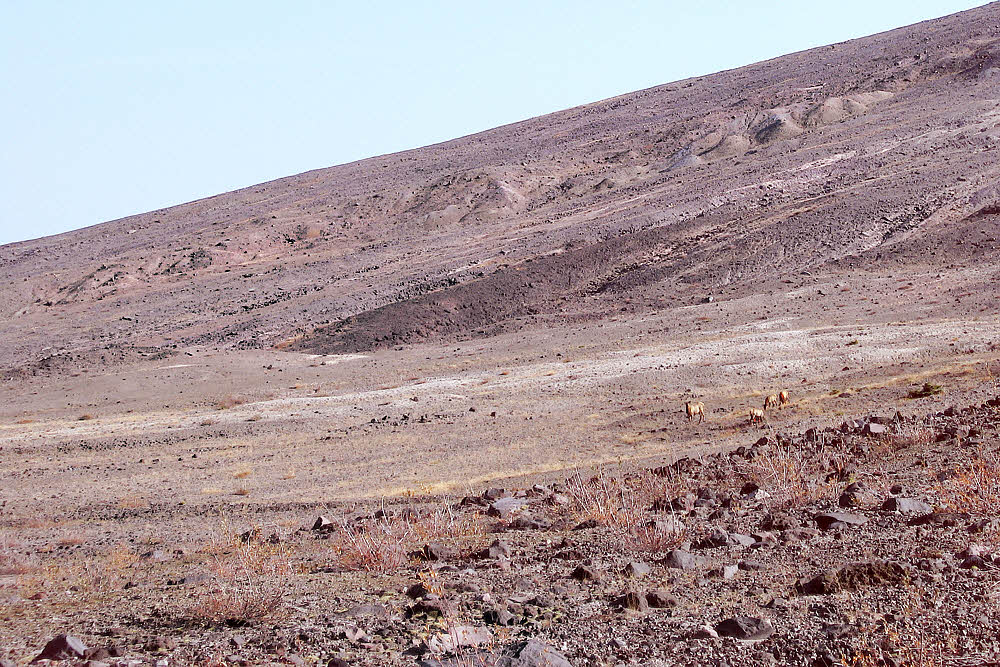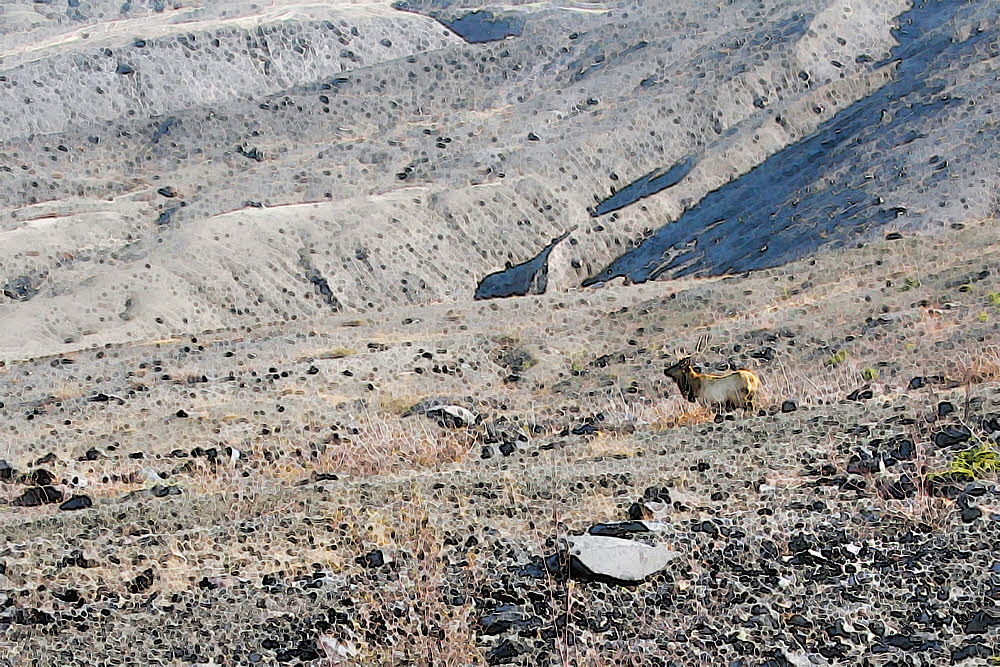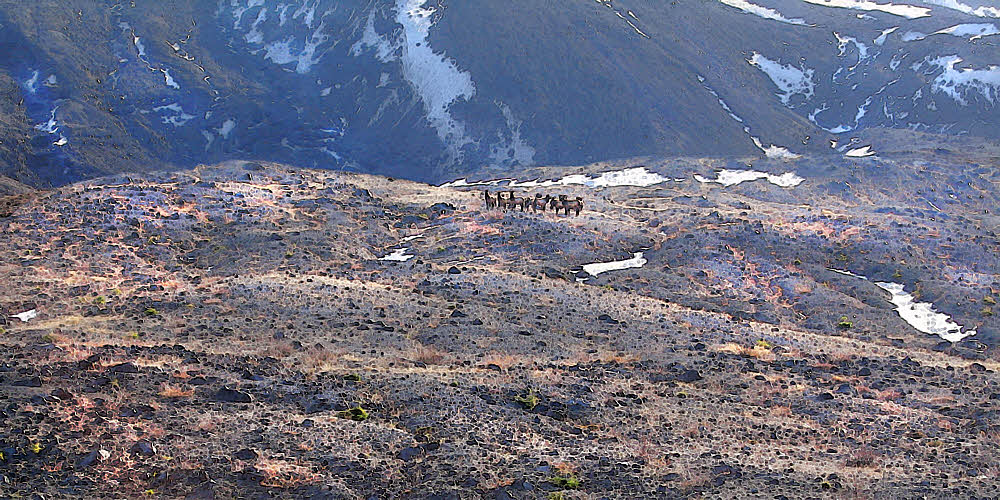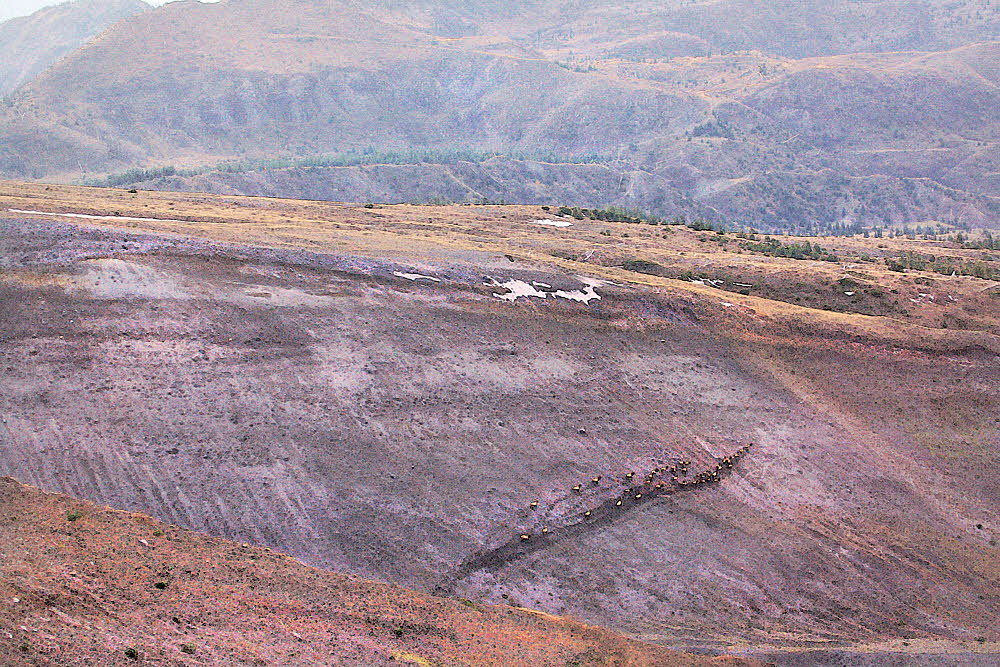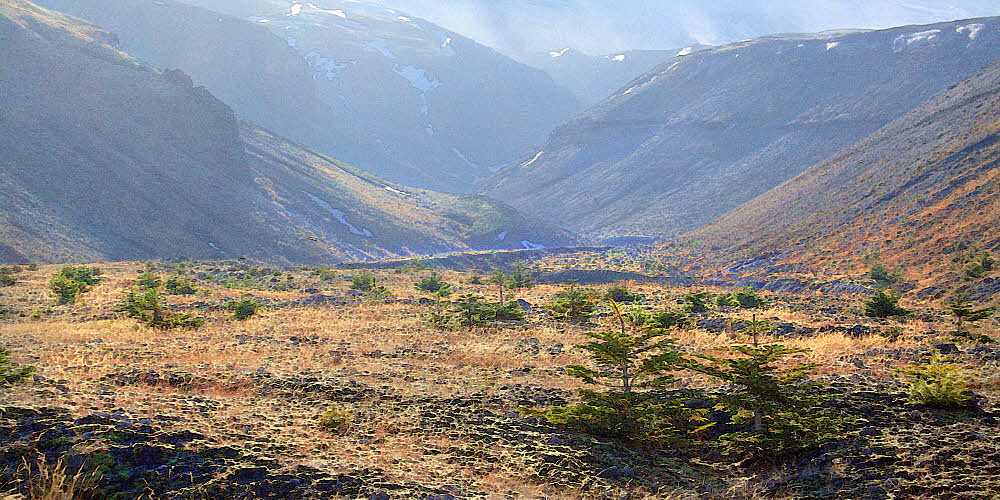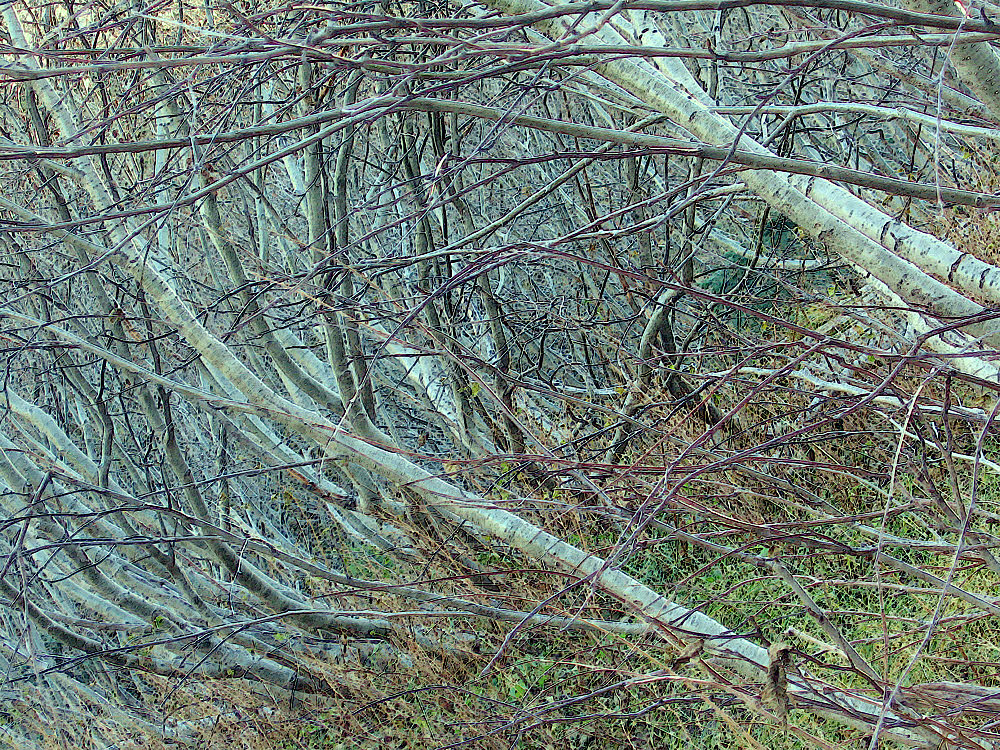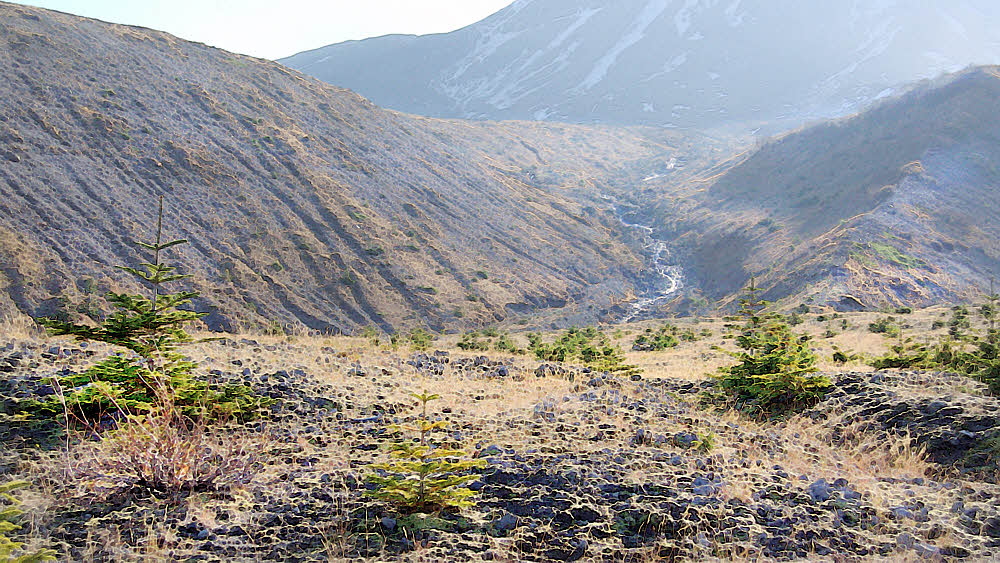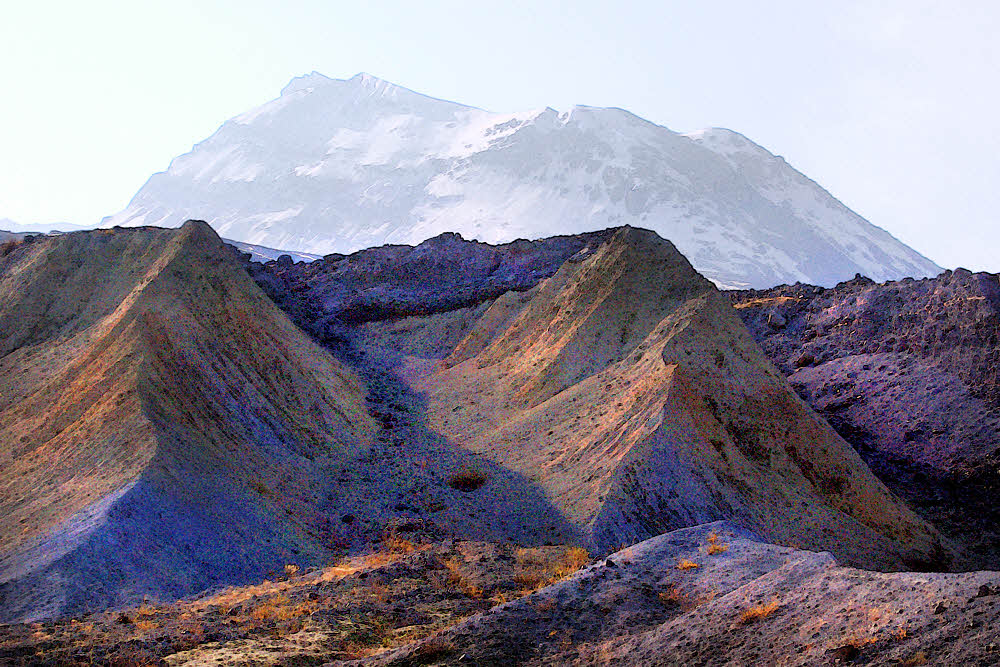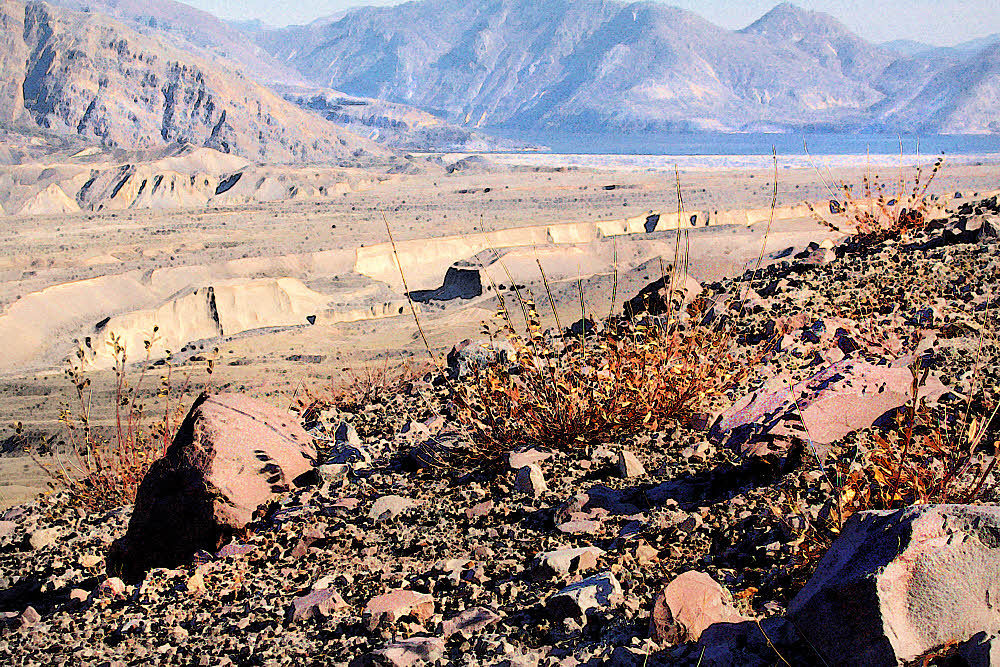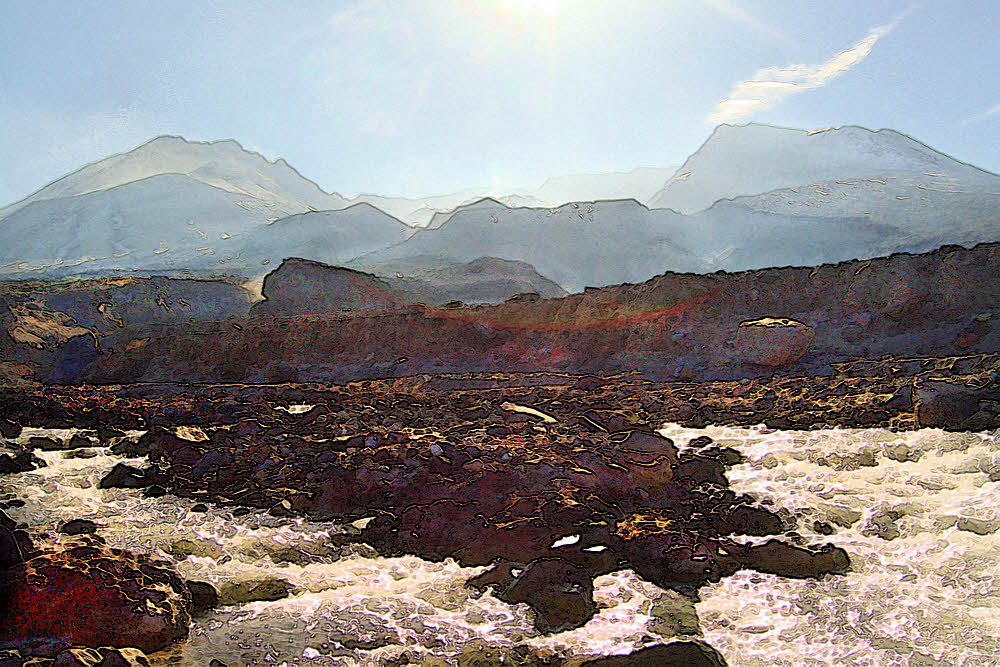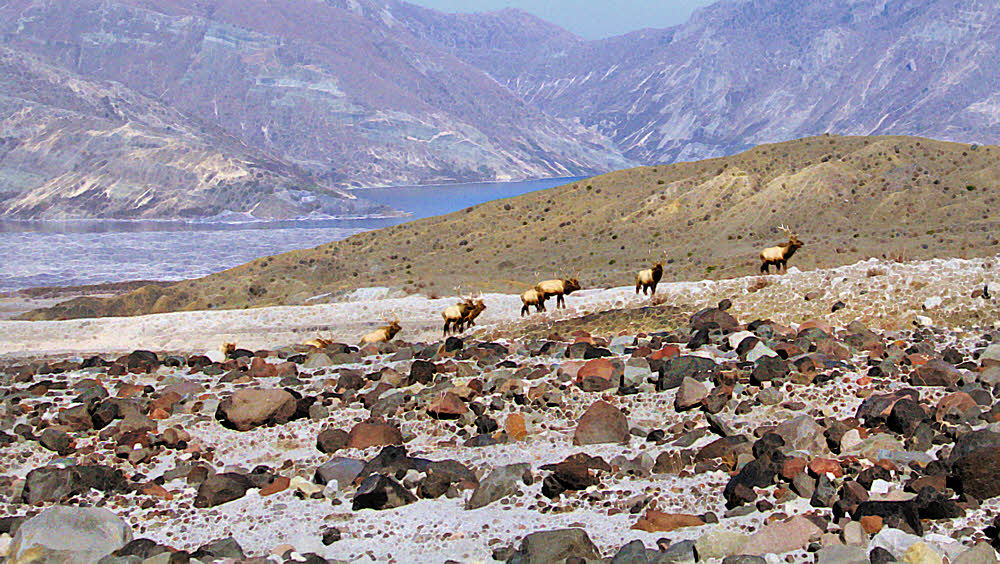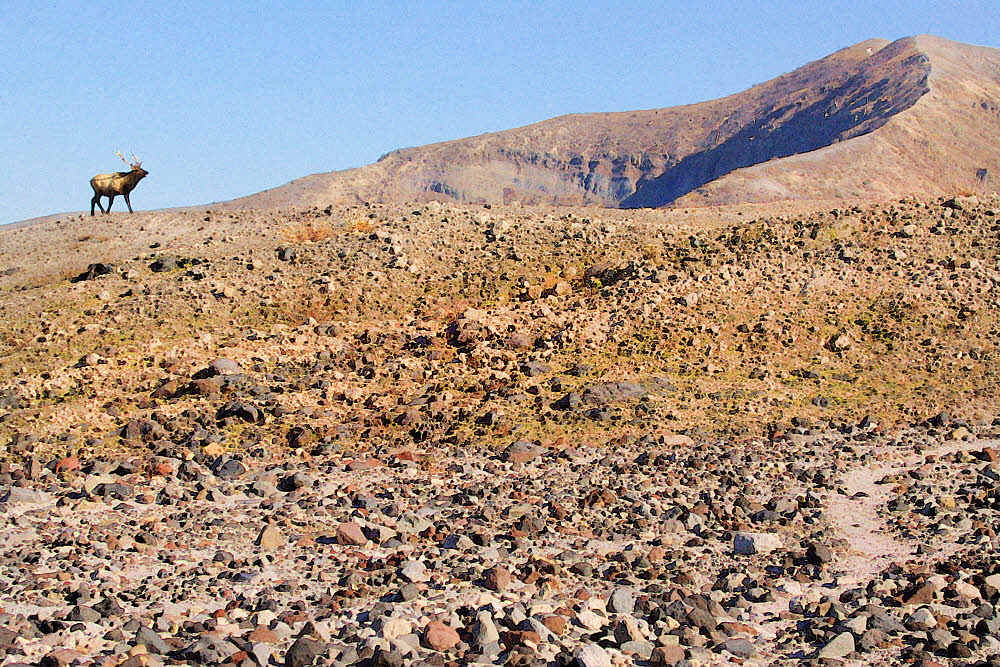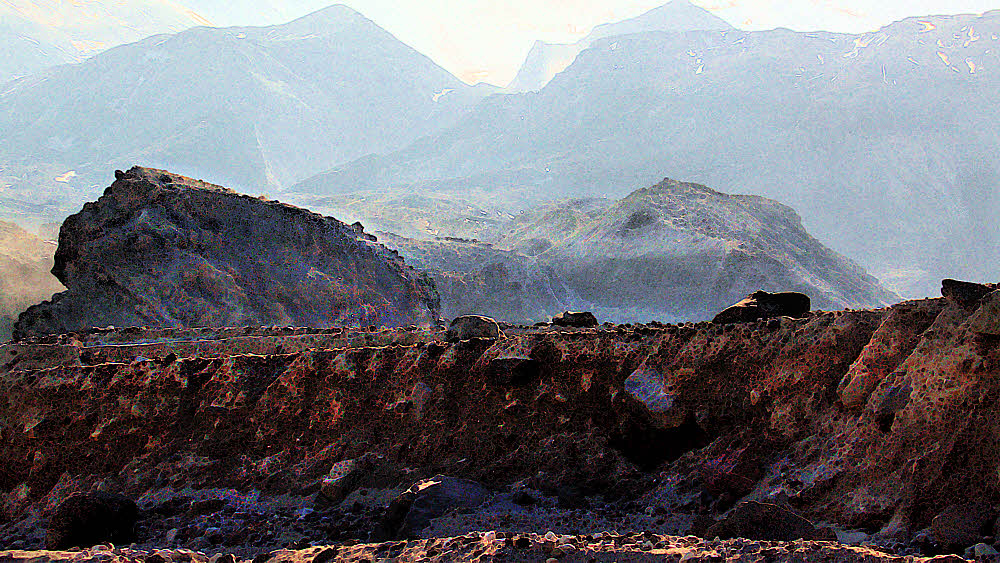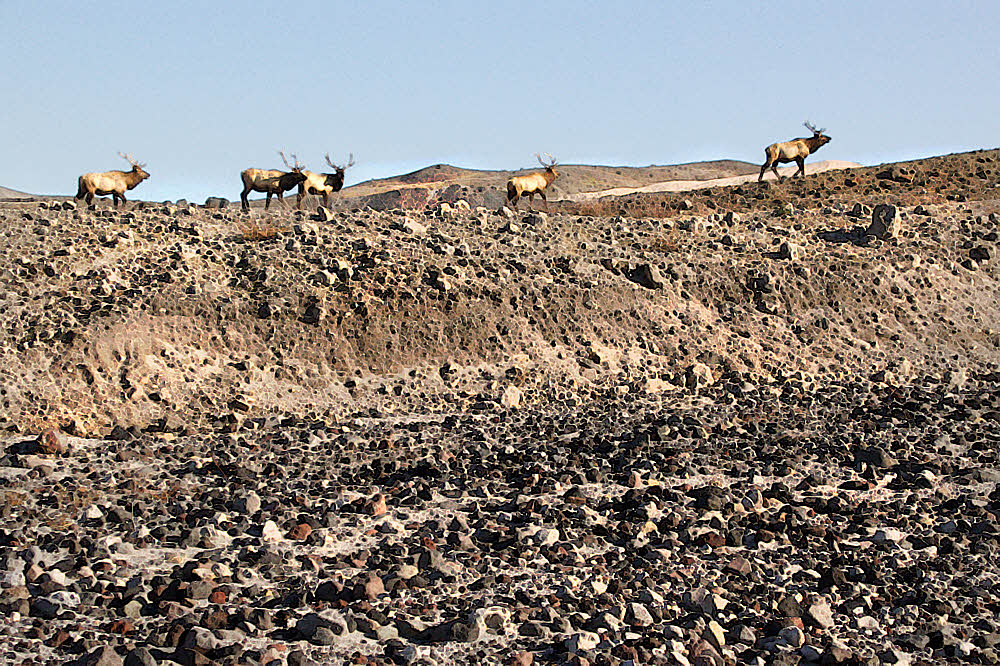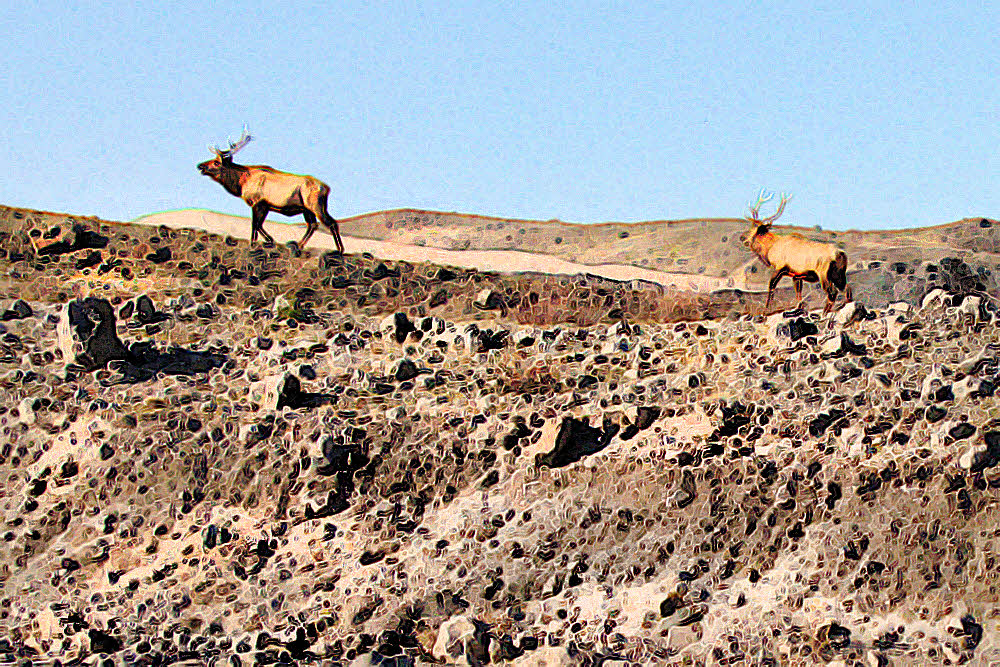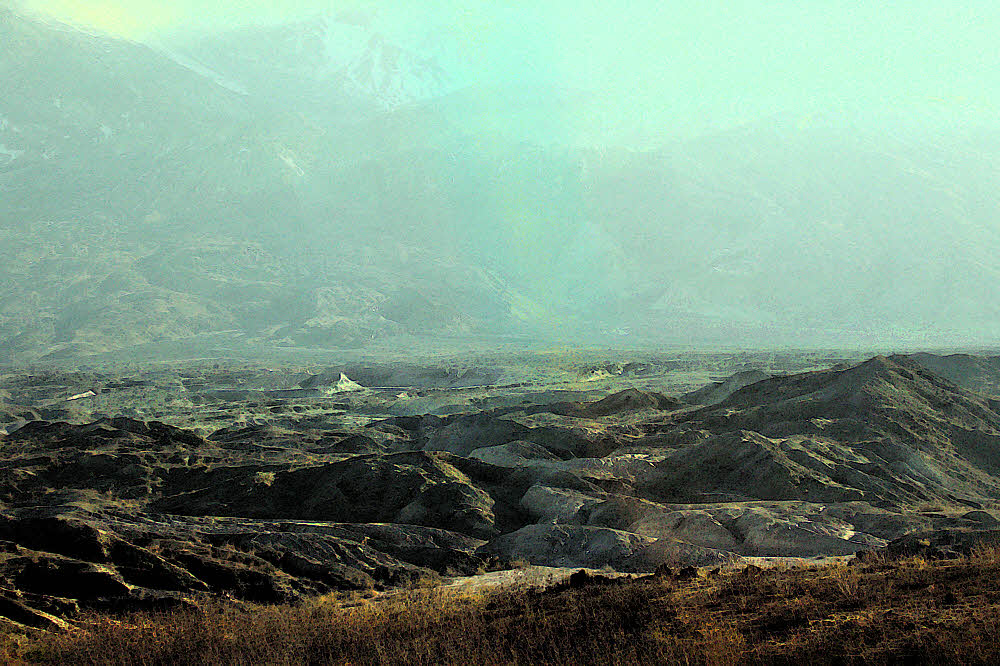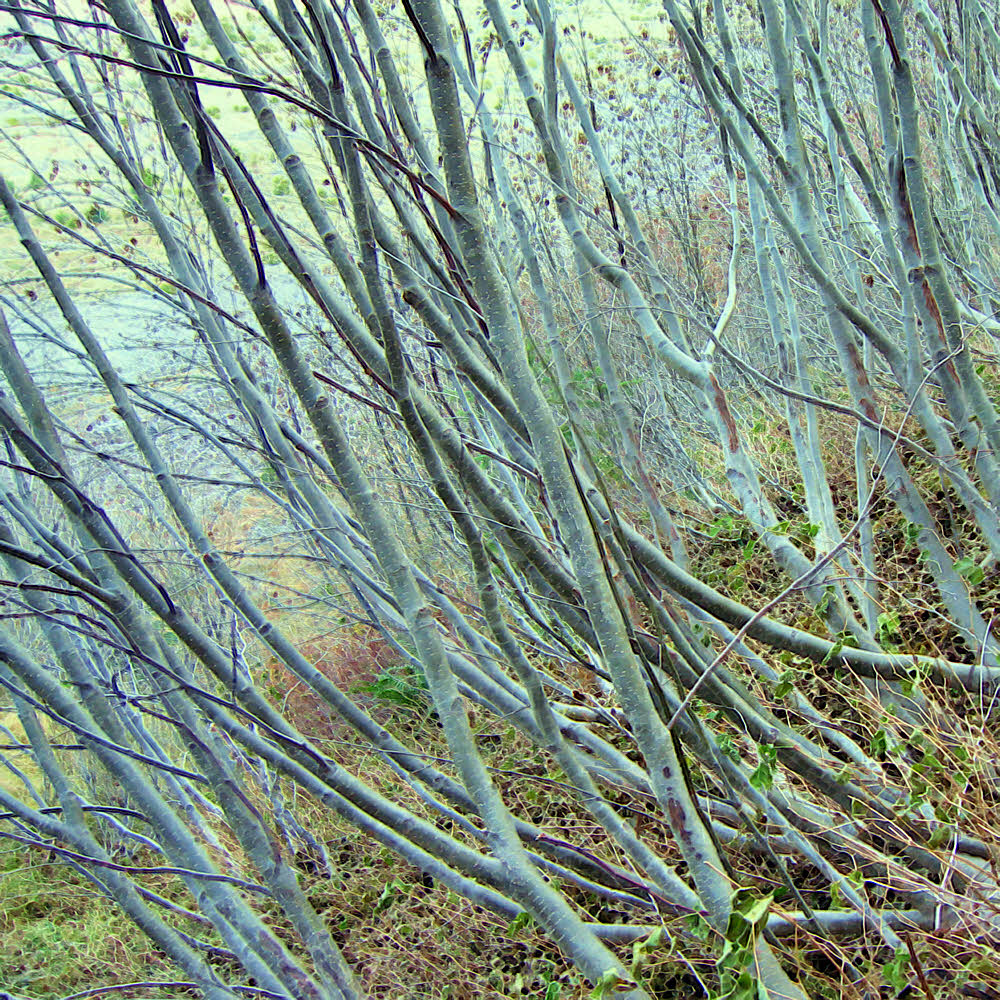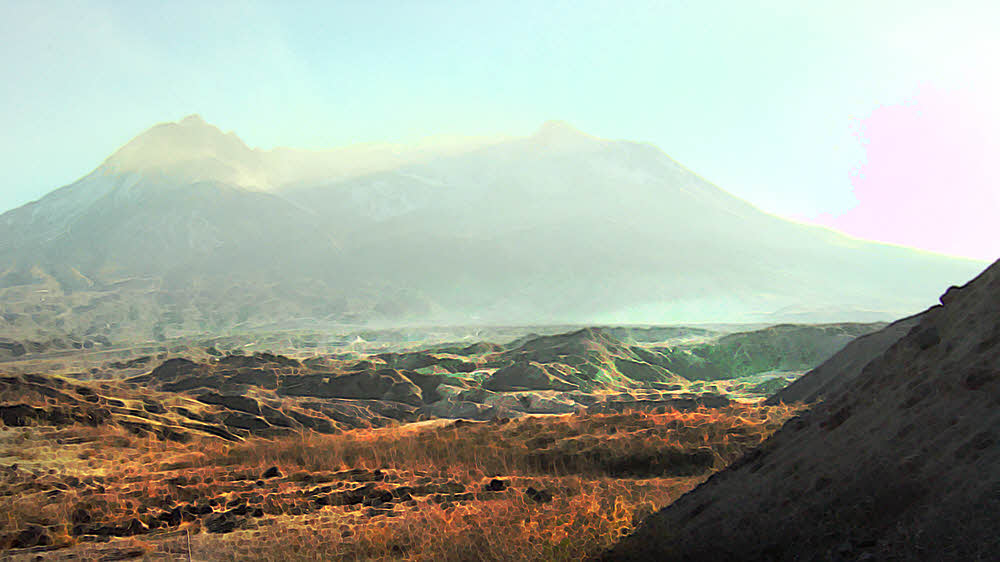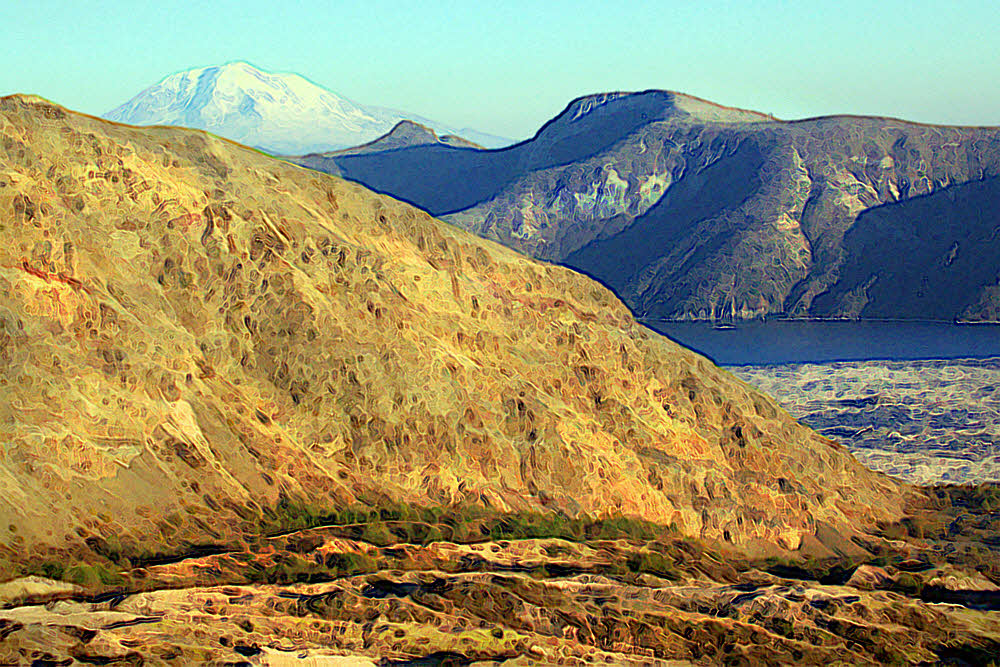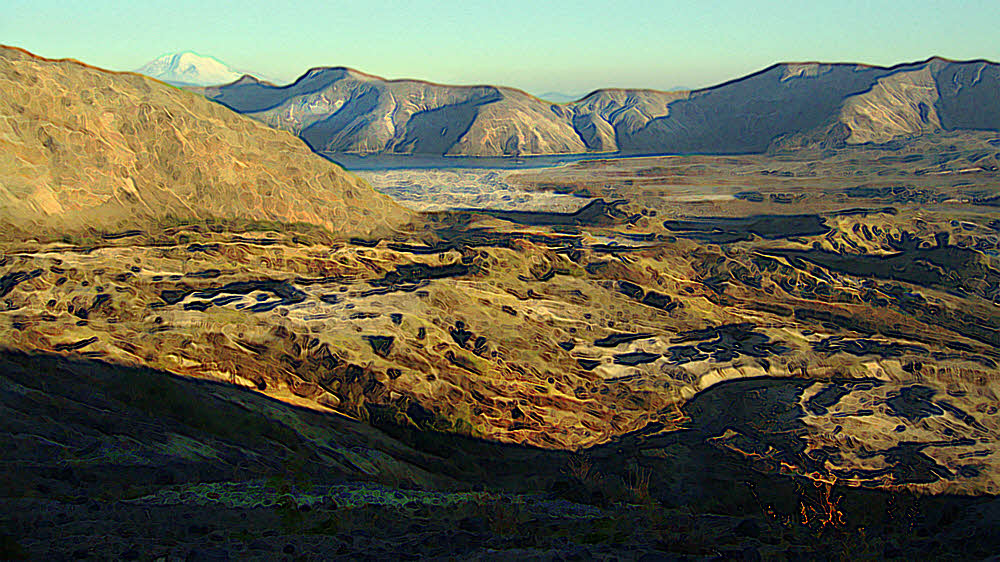
Little used these days, eke is exceptionally rich for a single-syllable, three-letter palindrome, and still worth knowing to boot. Maybe even worth using now and again. Let's see.
(1) Eke may be confused with eek, which isn't even a palindrome. Eek represents one fright unit during the
process of emitting a "squeak of fear", according to the Online Etymology Dictionary, which doesn't give any etymology for the word, but does say that eek was in use by 1940. Given the events unfolding at that time, it's understandable that eek might make its first appearance about then.
But eek still isn't eke, not quite. Eke is different.
Eke can be used to represent fright, fear, disgust, or all three in a bunch, as when one finds that, upon setting foot on a trail early one morning wearing one's newly-purchased $180 pristine pair of zero-drop, all Miracle-Flex, FKT Supr-Hikrs (with lace tassels), one's first step has gone straight into a pile of something describable as "steaming eke".
So, eke can be both the substance and the reaction to it.
The delivery agent for that substance could be almost anything with legs, but in order for the pile of it to be large enough to have the appropriate effect, it must be at least medium-sized. Like a dog. Dogs work.
Dogs work hard at producing this stuff, and are all too often seen on trails these days. As Edward Abbey once said, a dog's best use may be to be ground up for coyote food. And coyotes work too, spotting the landscape, as the dog tribe does, with mounds of soft eke, though more discreetly than domestic canines, being shy. Or smart. More so than dogs, which coyotes don't eat enough of. So it could be a kind of dog eke on your shoe, or it could be elk eke, deer eke, cow eke (which is delightfully soft most days), puma eke, bobcat eke, or everyone's thrilling favorite, bear eke, often occurring in a pleasant dark purple shade during berry season.
"Eke, eeew, poo." You might hear now and again, and see someone wiping a shoe.
(2) Eke as a quiet sound made by an inoffensive hiker carrying a more-than-average quantity of recessive genes when surprised by something. Surprised by anything. Or not even surprised. The eke sound might even accompany lunch, or a snack, or a sip of water, a glance at a watch, a stick, a stone, the rest of a stump, being a little alone, a sliver of glass, a fox in the brush, a knot in the wood, the song of a thrush, a fish, a flash, a silvery glow. The waters of March. Anything. You never know what these people are going to react to next, or why. It can even be fun to join in.
A stick, a stone, it's the end of the road. It's a thorn in your hand and a cut in your toe. It's the promise of life, it's the joy in your heart. While the river bank talks of the waters of March.
All typical manifestations of Eke World.
(3) Eke sounds a little like eft, which is a terrestrial juvenile newt. How about it then?
Newts are the adults. They have lizard-like bodies and hide under leaves in dark, humid locations, coming out only to breed or eat bugs.
Being adolescents, efts are less set in their ways, living in the space between their aquatic larval phase and their fully land-based stuck-for-the-rest-of-your-life-like-this adult situation.
Once upon a time you could use "water-eft" for the teenage form and "land-eft" for the adult, but now it's just "eft" and "newt", or maybe "eftyness" and "newtered" if you prefer adjectives over nouns.
The Old English for eft was "efte", or "efeta". Or "euft", "evete", or "ewt(e)". People can never seem to decide what to call things, especially those squishy low-riders they find creeping around in the garden, doing unauthorized things around the lettuce. In such encounters, you could reasonably say "Eeew, euft!", or just "Eke!" Either works.
And washing your lettuce before dinner is always recommended.) Wash everything.
Case in point: You may have had an "Eke the Magic Eft" squeaky toy when you were a kid, or the neighbor's dog did, which is where you got yours just before you put it in your own mouth, which in turn may explain a lot about why you are the way you are today. So it could actually be too late to start washing everything while expecting it to help, but at least you know where your problems came from.
(4) Eke as a unit of distance as used in backpacking.
Unlike more-famous units of measurement (banana equivalent dose, beard-second, helen, megafonzie, donkey power, warhol, jiffy, micromort, nibble, smoot, wheaton), when measuring in ekes, the farther you go the more they pile up in front of you.
First comes a simple expression of fatigue and despair: "Eke." Then, later, another: "Eke." Then again: "Eke, eke, eke, eke!" And so on, often degenerating into outraged profanity or incoherent mumbling: "How many more freaking, forking, eking miles do we have to go today? Eke, eke, eke, eke!" And like that.
This works because the eke is both compatible with and interchangeable with every other measurement system in existence according to a flexible exchange rate unique to every hiker, each situation, and even the particular time of day.
Traditionally the eke has been taken to be 0.2653 sheppeys, one sheppy being around 7∕8 mile (1.4 km), the closest distance at which sheep remain picturesque, but this ratio is good only on Thursday afternoons in June immediately preceding the night of a full moon. So don't rely on it either. Also, to apply the butt-armor principle to a real-world situation, don't tell anyone you heard it here, 'K?
This setting, including fatigue, sunburn, various levels of uncertainty, hunger, and biting flies contributes to the process of "eking out the miles", which may sound more familiar, or at least you've read about others doing it. True? No? Maybe?
But seriously, hey — when all is said and done, the eke is really a quantity of frustration, not a unit of distance, so the foregoing discussion does not actually apply. Let's move on.
(5) Eke: Quick on the uptake, cheery and enthusiastic, whether warranted or not.
This goes back a ways.
In the very dim past (because that's when people used to burn olives for household lighting), people used to burn olives for household lighting. That wasn't satisfying in any way, even to them, and they didn't know any better, because they couldn't go to Walmart and buy a Disney Princess Table Lamp, Pink, for $19.97 (currently out of stock, shipping not available). But things got better. They had to, possibly because of the annoyance of shopping at Walmart and finding everything they wanted was either "currently out of stock", suffered from "shipping not available", or both, not to mention the dreary color scheme there and the bare concrete floors, and who wants to be seen there anyway?
So they started making their own high tech lighting systems, using the oil of olives, which was about all they had besides dirt. But dirt and olives actually worked, and for a long time.
The olives they stomped on, up and down, up and down, until they had olive oil. Someone even tried eating a little of it, and didn't die right away, and because of that, maybe, olive oil later became a major ingredient in several trendy hobby diets.
The dirt was something they also played with, mixing it with water or goat urine or something and then trying to set it on fire, which wasn't wholly satisfying because dirt doesn't burn that well even with the addition of the very best goat urine, but they did get pottery after a while, a slightly flattened form of which made good but primitive oil lamps. Since this was, in fact, the Primitive Era, everybody said "WTF, it's Good Enough, Yo", and moved on to inventing grapes.
Grapes did not burn well at all. Not in any way even experts could recognize. This was a problem. Seemed to be.
Grapes, however, once invented, did prove interesting to play with. They exploded pleasantly when bitten and released a sweet juice. This was fun. People had never had fun before, so grapes gained a popular following. Life was good, in a dismal yet not completely dreary way. Scattered wars and episodes of plague came and went, and sometimes grapes withered and dried on the vine because people were suddenly too dead to harvest them, but that was OK, since now there were raisins, though not everyone was into dried goo, but a lot were.
Some people tried accumulating grape juice in jugs (made of burned mud, etc. and so on) to drink later in mass quantities, and then a war or plague blew through town, messing up everything and delaying the guzzling. And since there was always the possibility (speaking optimistically) of only a few creepies (rather than lots and lots) crawling into those jugs to set up housekeeping and maybe to die, some yeast got mixed in and then wine appeared in those patiently waiting unattended undrunk jugs.
Wine was a terrifically big deal. Think about it. Your life is delimited by weather, sunshine, darkness, the absence of sunshine even during the day (i.e., winter), disease, death, hopelessness, the smell of burning olives, and mud. For centuries.
Then comes wine. Major change, folks.
Major, major change.
Grape stomping becomes an Olympic event almost, with the proviso that the Olympics didn't start for another one or two thousand years, but they were ready. A religion or two popped up, fueled by wine. Wine inspired many, many dance moves, fights, and much more.
One frequent problem, though, was that in the early days people did this grape stomping on any old flat piece of dirt. (Back to dirt again — did you notice?) Subsequently, the grape juice piddled off the edges of the puddle and sank into that dirt. Not really very good by any definition but that was all they had at first. It did get better though.
First they did the stomping on top of a piece of hide, and then they caught the juice in another hide. Some time later, they had a more permanent place to put the juice, but the key was that intermediate vessel. That piece of hide morphed into what they called a "beker", and the juice that went into it was "eke" (grape puke), sometimes pronounced "eker". They put the eker in the beker.
When this all became standardized, the eker beker stabilized at a traditional length of 37.1 robust ripe olives with a diameter equal to the thickness of sixteen great toes of the average wine-grape stomper of that era, which by now had become the Primitive Era v. 2.01 or thereabouts. Still pre-metric.
Beker (or beaker, as we say in our enlightened age) was actually a word, in case you are beginning to feel nagging doubts about just how far we've gone out on this limb together. You're still here, right? Hope so — I'm still having fun.
The very very-official and astute Online Etymology Dictionary says that beaker is an "open large-mouthed vessel," which dates from the mid-14th century. The Old Norse said bikarr, the Middle Dutch used beker for "goblet". (See?)
Referring to other sources, we have bikeri from the Old Saxon (whose name has been lost to history, but he and his buddies do sound sort of knowledgeable), behhari from the Old High German (whoever he was), bicarium from Medieval Latin, which in turn may be a diminutive form of the Greek bikos, which was "earthenware jug, wine jar, vase with handles," and also a measure. All of uncertain origin, of course, but you can't have everything. We indeed do not have everything but we do have something. Be grateful, my friend, for something. It's more than many have, or even want.
And what we do have here, today, and which is just about the best I can invent, is an understanding that when the eker beker got full, people wanted it, before or after its contents fermented — they didn't care a whole lot too much about which, only about how much. Quality wasn't necessarily a priority when you could be dead within five minutes, any day of any week.
There may have been a word for this intense fixation, and it may have sounded a lot like eacher, or not, but maybe, and as beker slowly evolved toward beaker, eker evolved to, first, eacher and then to eager, which is familiar to us, eh?
So then they finally had "eager beakers", a fitting term to describe everyone standing in line or even rioting at times, all desperate to taste the gifts of the vine. This may or may not have ultimately coincided with the development of tall fuzzy hats made of the outer layers of various beavers. Maybe? And just about everyone was eager to have a beaver hat in those days. (Men only, of course, because why would anyone else give a fart?)
Hence the ultimate phrase "eager beaver", which applied to anyone obsessively wanting anything, like hats, beakers of wine, business success, or even "most likely to succeed" award plaques.
All of which is fairly disgusting given beaver hygiene, when it occurs at all, beavers being rodents who live in mud huts and eat sticks, so you have to wonder about all this, right?
But then again — lots of hikers are like this. Lots of Go Getters, Self Starters, High Achievers, Live Wires, Doers, Hustlers, Busy Bees, Dynamos, Fireballs, Hot Shots, and Fastest Known Timers are out there. Kinda fits in a way. All eager beavers, some sober, some with only mild forms of mental illness.
(6) Eke: Where trail names came from.
First, all the other varieties of eking. (Covered already.)
Next, from around the year 1200, eke, meaning "to increase, lengthen". Good enough as-is but not inspiring, so we look a little deeper and find, from the mid-15th century, eke as a noun meaning a "nickname" (from "ekename" or "eke name"), which meant "an additional name", which implies, going back to the beginning of this paragraph, an increase or lengthening of one's list of aliases, possibly as one adds miles or life experiences.
Do you in fact know anyone whose life can be covered by just one unchanging name? If you do, I bet that you regret that sort of relationship. Many people do better.
How about the ekenames of these people? Mr Smiley Virgin, Tough Obnoxious Bitch, Beardy McTickfarm, Cleveland Steamer, Bad Dinner, Toilet Spider ("Paging toilet spider, toilet spider to thread 3."), StonePasser, Fluttering Whisperdick, Stabby McNeckbeard, Little Dirty Barn Monkey, Marmot Pounder, Buck Larceny, Privy Clogger, Climb & Punishment, Slow White and the 7 Drunks, April and Fool. Might be interesting to meet, right? Or at least to view from a safe distance, but not likely to be boring.
Which makes me wonder what happened to two people I knew in high school: Grover Icenogle and Egwan Spelmanus. What trail names would fit them, and how many fights have they gotten into over the last few decades, with or without piling up even odder monikers?
